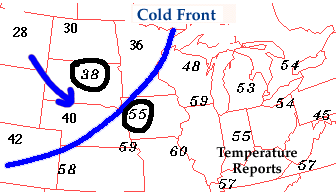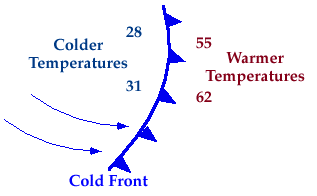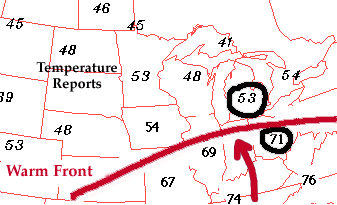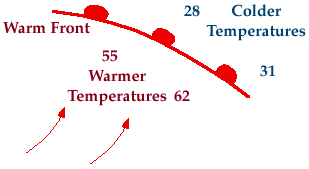 |
Temperature:
The value highlighted in yellow located in the upper left corner is the surface temperature measured in degrees Fahrenheit. In this example, the reported temperature is 64 degrees. | |
 |
Weather Symbol:
The weather symbol highlighted in yellow indicates the type of weather occurring at the time the observation is taken. In this case, fog was reported. If there were thunderstorms occurring when the observation was taken, then the symbol for thunderstorms would have appeared instead. |
Here is a chart with some, but not all, of the weather symbols used to represent the current weather on surface station plots.
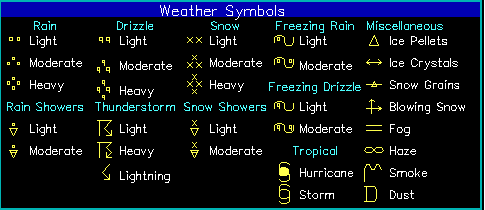
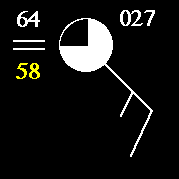 |
Dew Point Temperature:
The value highlighted in yellow located in the lower left corner is the dew point temperature in degrees Fahrenheit. In this example, the reported dew point temperature is 58 degrees. | |
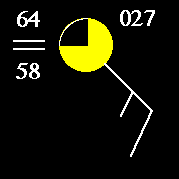 |
Cloud Cover:
The symbol highlighted in yellow indicates the amount of cloud cover observed at the time the observation is taken. In this case, broken clouds were reported. In our lab, we will report the cloud amounts in 8ths. In this case, the cloud cover would be 6/8, because 6/8 (or 3/4) of the circle is filled. | |
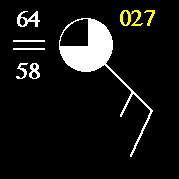 |
Sea Level Pressure:
The value highlighted in yellow located in the upper right corner represents the last three digits of the sea level pressure reading in millibars (mb). Surface pressures range from 960 mb to 1030 mb. On the surface station plot, either the 10 or the 9 has been dropped off of the measurement, and it is up to the meteorologist to figure out which one was dropped (by using common sense, and the normal range values). The pressures are given out to tenths of millibars. The surface pressure in the example is 1002.7 mb. | |
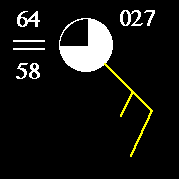 |
Wind Barb:
The symbol highlighted in yellow is known as a wind barb. The wind barb indicates wind direction and wind speed. The barb points in the direction from where the wind is coming from. In our example, there is a southeast wind. The wind speed is measured (in knots) by the number and type of flags on the bard. A short flag is 5 knots, long flag is 10 knots, and filled triangle is 50 knots. In our example, we have a short and a long flag, so the wind speed is 15 knots. |
